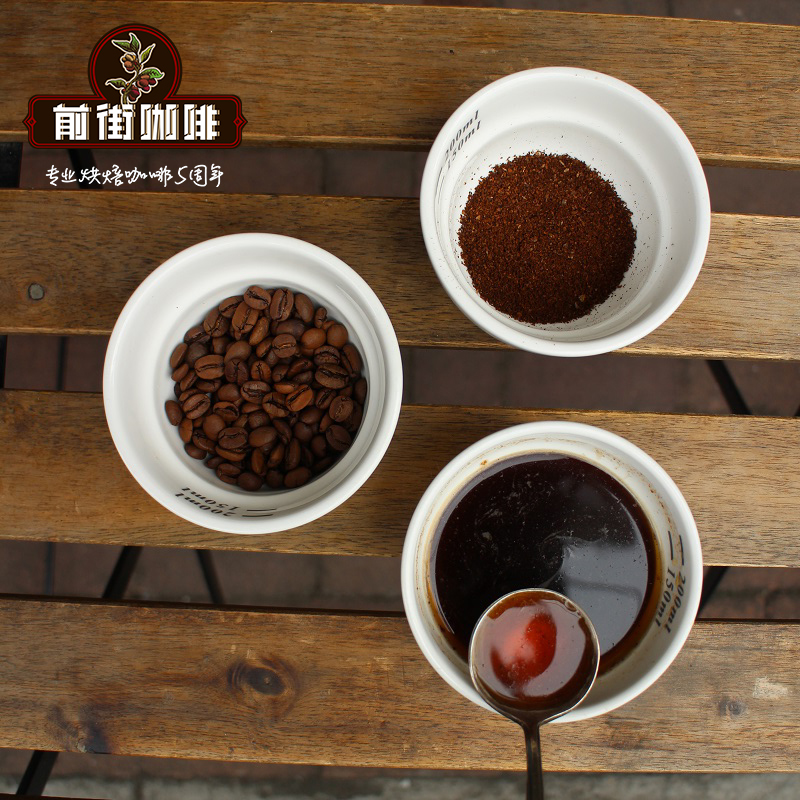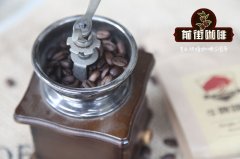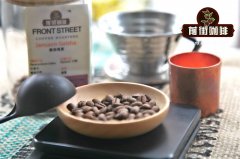Costa Rican coffee bean evaluation: how to make the blue label of rose summer coffee in Costa Rican Goddess Manor?

Professional coffee knowledge exchange more coffee bean information please follow the coffee workshop (Wechat official account cafe_style)
Introduction to the Water washing Rose Summer Information of the Goddess Manor in Costa Rica Coffee Multi-Tower producing area
The Goddess Manor uses organic coffee cultivation and uses local native trees and fruit trees as shade. The fertilizer used is also coffee cherry pulp mixed with molasses, which is added to the fertile soil with high mineral content in the adjacent mountain area combined with microbial fermentation.
Provide organic fertilizer for growing coffee. All the ripe red-purple cherry fruits are picked by hand and the soaking and fermentation process is strictly controlled to develop a unique water-washed bean, which gives an excellent balance between the clarity and complexity of the coffee and makes its flavor more stable. it is intoxicating to develop the exclusive flavor of Rose Summer layer by layer.
Located in Costa Rica's best-known Tarrazu region, the Dota area is famous for producing micro-batch rose varieties! In 1865, the Dota region enjoyed the reputation of good Costa Rican coffee, because the highway construction extending from the capital to the Dota valley had to pass through the Tarazu producing area, so the Coffee Bureau of Colombia used to mark Dota Tarrazu when it marked the sub-producing areas. This area is a typical plateau terrain, no matter the soil or temperature and humidity are the best choice in the growing conditions of coffee. The Goddess Manor was established in the 1960s. The manor uses organic farming to grow coffee and uses local native trees and fruit trees as shade. The fertilizer used is also coffee cherry pulp mixed with molasses. The fertile soil with high mineral content in the adjacent mountain area is added with microbial fermentation to produce organic fertilizer that can enhance the disease resistance of coffee planting. California earthworms are also used as culture soil. And directly used as the main nutrient source of coffee trees in the fertilization period and mixed planting a variety of coffee varieties. All 100% ripe red berries are selected by hand and made by slow drying in the sun (Slow Dry). The raw beans will be exposed to the sun for nearly 30 days (longer than the usual sun drying time), which will slow down the heating rate with a canopy.
Seven major coffee producing areas in Costa Rica
Costa Rica is located in the Central American isthmus, and is simultaneously regulated by Pacific and Atlantic currents and sea breeze. There are many towering volcanoes up to 2000 meters above sea level in Costa Rica. Coffee berries grow slowly in the fertile volcanic ash soil and cool environment at high altitude, giving birth to coffee beans with complete and rich flavor. The first place in Costa Rica to grow coffee was on the slopes of the Poas and Barva volcanoes, today known as the Central Valley (Central Valley). After years of development, there are now seven major coffee-growing areas.
Production area name planting high yield seasonal cup test results coffee characteristics
Western valley WestValley1000m-1200m11 month-March high acidity, full bean body, fragrant acidity and bean body can not compete with beans from other producing areas, but the overall taste is well balanced, with hints of almonds and peaches.
CentralValley1200m-1600m11 month-March in the Central Valley has high acidity, full beans and rich aroma. The coffee in this area is the earliest coffee growing area in Colombia, rich in volcanic soil and sometimes with chocolate aroma.
Tarasu Tarrazu1200m-1700m12 month-March with high acidity, hard and full beans, rich aroma, this area is a world-famous producing area, the main feature is that the high seafood area creates an unparalleled perfect taste.
Sanhe TresRios1200m-1650m12 month-March with high acidity, hard and full beans, rich aroma, good climatic conditions, obvious taste and good balance.
Euro Orosi900m-1200m9 month-February smooth sour taste, full beans, fragrant coffee in this area has a smooth taste and good balance.
Brenka Brunca800m-1200m8 month-January general acidity, full beans, ordinary flavor of the latest Costa Rican production area, suitable for all kinds of consumers, taste compatible with other producing areas.
Duli Alba Turrialba600m-900m7 month-December general acidity, thin beans, fragrant and fragrant harvest season in this area is the earliest in all Costa Rican producing areas, mainly due to the influence of abundant rainfall.
Costa Rica originates the method of "as sweet as honey"
Costa Rica has a law that only allows the planting of Arabica, and Robasta is "contraband" in the country, which is rare in the world. Costa Rica is dominated by new varieties of coffee, such as Kaddura, Kaduai, New World, etc., while the ancient bourbon and Tibica are rare. There are also many varieties in the territory, the most famous is the bourbon variety Vera Shatchi, which is an elegant variety. Brazil has also been introduced and has won a prize. In addition, Costa Rican research institutions have spared no effort to improve the hybrid Katimo, trying to reduce the stout pedigree and enhance the Arabica flavor of Katimo, which has been exported to Asia for trial cultivation in recent years.
Costa Rican coffee is mostly washed, and in recent years there has been an alternative half-sun treatment called "miel", or "honey coffee", which can be translated as "sweet as honey", which is different from Brazilian half-sun treatment. The coffee that Costa Rica claims to be as sweet as honey is marked with a big "Honey Coffee" on the sack, which is quite eye-catching. It improves the Brazilian half-sun method to increase sweetness, focusing on keeping the pectin layer glued to the shell beans as completely as possible (in the Brazilian style, scraping off part of the pectin layer), peeling and moving the sticky shell beans to an outdoor viaduct, similar to Kenya's practice, so as not to absorb the odor and moisture of the land (Brazil is placed on the cement floor), and then exposed and air-dried for about 1-2 weeks (Brazil half-day exposure is only 1-3 days. Supplemented by machine drying Costa Rica's "as sweet as honey" is dried in the sun. During this period, we have to turn the shell beans every hour to make them evenly dry, so that the beans can fully absorb the fruit flavor and sugar essence of the thick pectin layer, and after dehydration, they have to be ripe in wooden containers, which is extremely laborious, but the fruit of "honey brew" tastes as sweet as honey. The disadvantage is that the risk of this method is very high, and it is easy to mildew and rot when the weather is too wet.
END
Important Notice :
前街咖啡 FrontStreet Coffee has moved to new addredd:
FrontStreet Coffee Address: 315,Donghua East Road,GuangZhou
Tel:020 38364473
- Prev

Costa Rica Abejilla Little Bee processing Plant _ Solar Honey treatment of Venesia Venice Coffee beans
For more information on coffee beans, please follow Coffee Workshop (Wechat official account cafe_style) Coffee processing Plant in Costa Rica-Abejilla Farm has a unique coffee variety in the world, its maturity will be delayed by 25 to 40 days, which is larger granulated, more full-bodied and full-bodied. So many buyers are willing to spend more than other products.
- Next

Summer Flavor of Rainbow Manor in Costa Rica-how to make coffee in Costa Rica
Professional coffee knowledge exchange more coffee bean information please follow the coffee workshop (Wechat official account cafe_style) Costa Rican coffee is famous all over the world for honey treatment, while this batch of coffee beans are carried out in the sun, with low acidity, high complexity and sweet flavor, through a stable, uniform and prudent exposure process, so that the surrounding residual pectin contains sugars and alcohols.
Related
- Detailed explanation of Jadeite planting Land in Panamanian Jadeite Manor introduction to the grading system of Jadeite competitive bidding, Red bid, Green bid and Rose Summer
- Story of Coffee planting in Brenka region of Costa Rica Stonehenge Manor anaerobic heavy honey treatment of flavor mouth
- What's on the barrel of Blue Mountain Coffee beans?
- Can American coffee also pull flowers? How to use hot American style to pull out a good-looking pattern?
- Can you make a cold extract with coffee beans? What is the right proportion for cold-extracted coffee formula?
- Indonesian PWN Gold Mandrine Coffee Origin Features Flavor How to Chong? Mandolin coffee is American.
- A brief introduction to the flavor characteristics of Brazilian yellow bourbon coffee beans
- What is the effect of different water quality on the flavor of cold-extracted coffee? What kind of water is best for brewing coffee?
- Why do you think of Rose Summer whenever you mention Panamanian coffee?
- Introduction to the characteristics of authentic blue mountain coffee bean producing areas? What is the CIB Coffee Authority in Jamaica?

